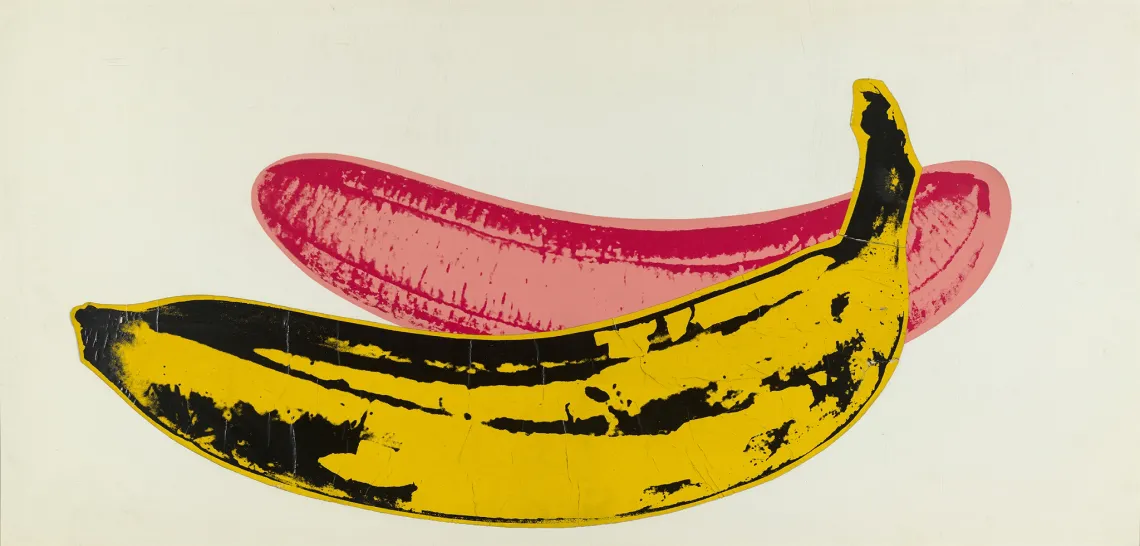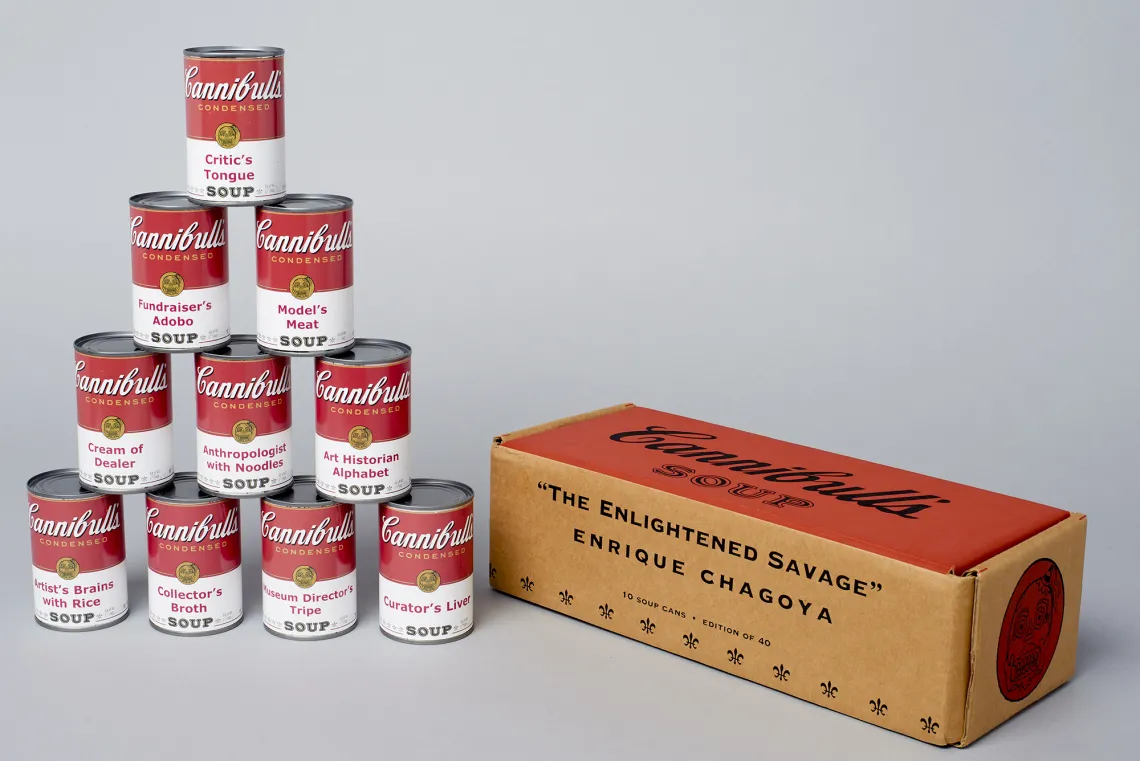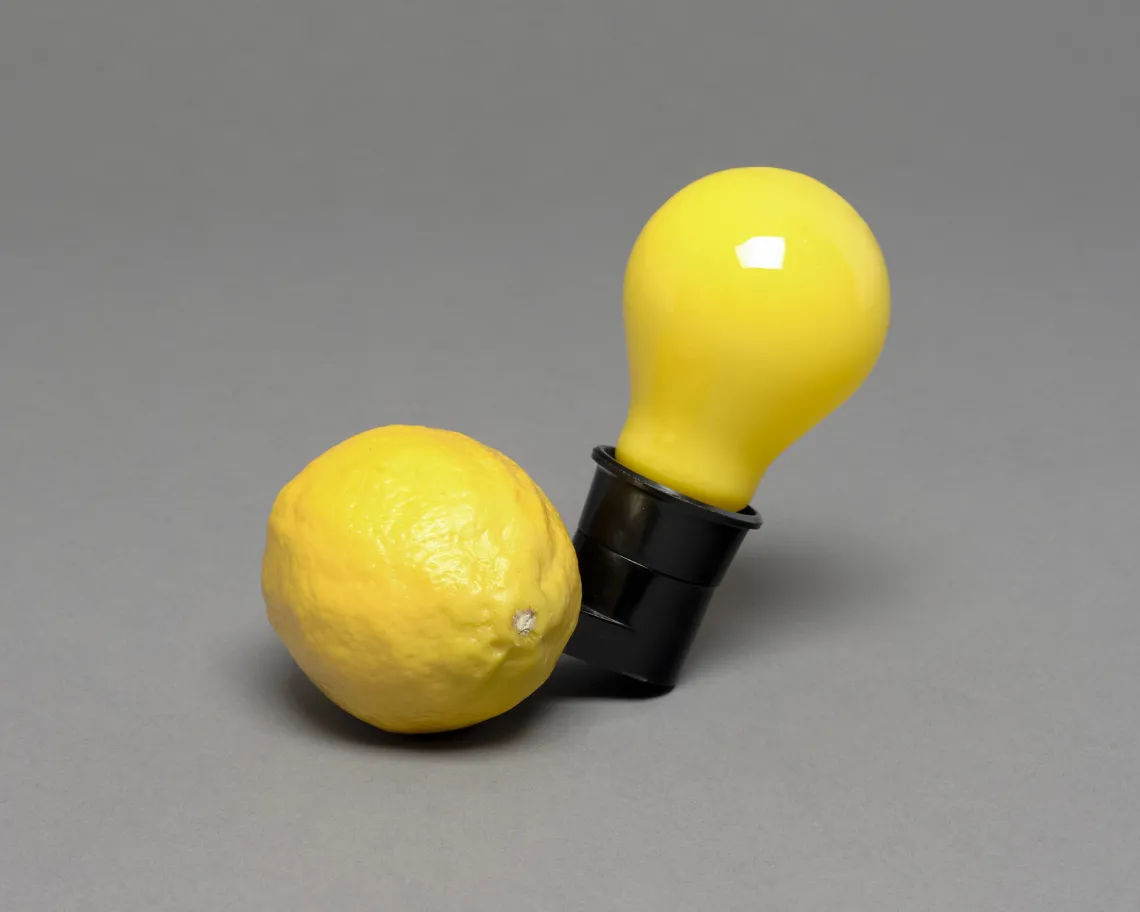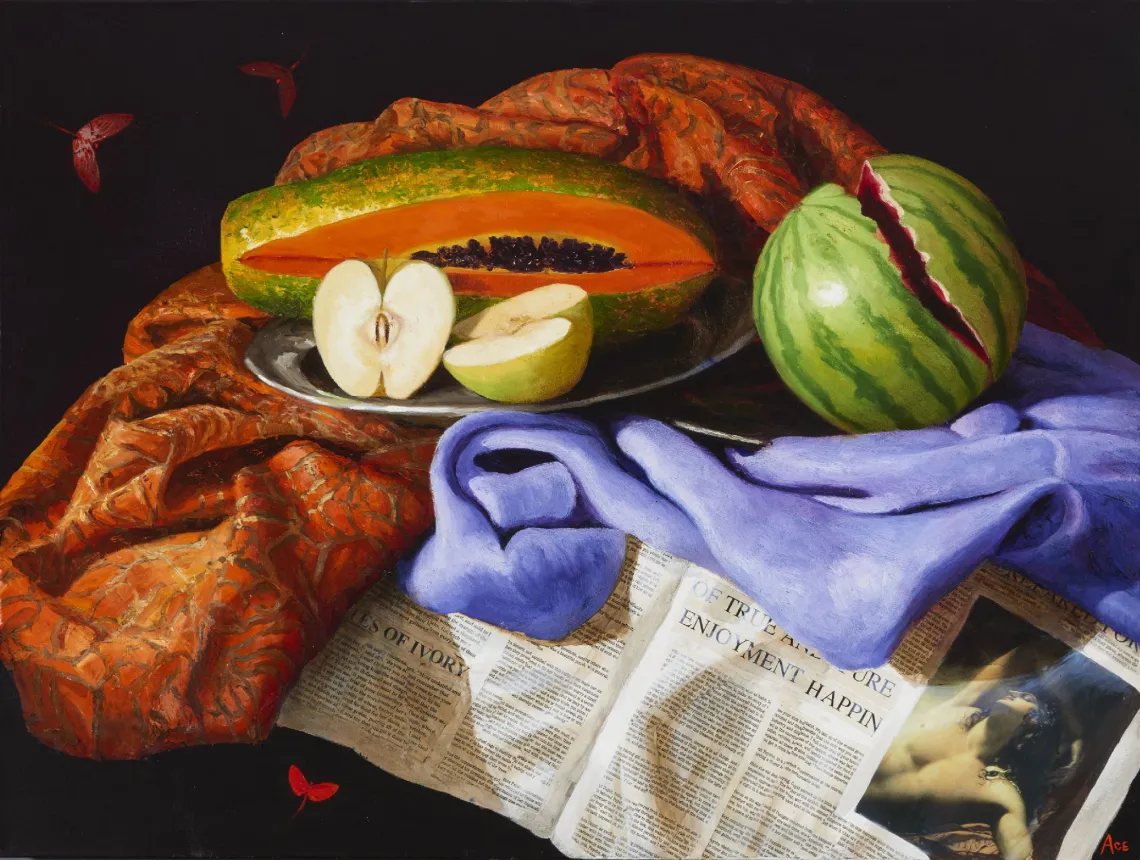The Art of Food

Andy Warhol (American, 1928-1987) Banana (II.10), ca. 1966 Two screenprints on styrene and laminated plastic, edition of 300 Collection of the Jordan Schnitzer Family Foundation Image: Strode Photographic
Olivia Miller ’05, curator at the University of Arizona Museum of Art, is the mastermind behind The Art of Food, a popular — and provocative — exhibition that’s all about food.
Three years ago, though, the beginnings of the show gave Miller a considerable art challenge.
Portland collector Jordan Schnitzer had visited the UAMA and was so impressed with the museum that he offered to lend some of his artworks to the university for a show. That’s not unusual for Schnitzer, a commercial real estate mogul; he often lends pieces in his collection to universities free of charge.
“As much as I have passion for the art I live with,” he says, “my greater passion is sharing it.”
He invited Miller to Portland to peruse the phenomenal collection he and his art-focused foundation, the Jordan Schnitzer Family Foundation, have amassed. It includes works by the most famous modern and contemporary artists of our time: Andy Warhol, Robert Rauschenberg, Jasper Johns, Wayne Thiebaud, Jenny Holzer.
Miller eagerly traveled to Portland with Meg Hagyard, then the interim UAMA director. But it was no easy task to decide which of the treasures to bring back to Tucson. After all, Schnitzer’s collection holds no fewer than 19,000 artworks. Yes, 19,000.
How did she whittle those 19,000 pieces down to a reasonable number?
She laughs at the question.
“Jordan had his collection organized in binders that you could flip alphabetically,” she explains, adding that it was much easier than going through works in storage.
They first considered a solo exhibition, but then moved on to the idea of a thematic show featuring many artists. “We wanted it to be interdisciplinary,” she says. “We had the same goal we have for every exhibition we do: We wanted every student or person from the community to feel they can connect with the show, get something new from it and see themselves in it.”
Surprisingly, the collection has hundreds of pieces of artwork related to food, and soon, food was what they were thinking about.
Tucson had recently been named a UNESCO City of Gastronomy in honor of the region’s long and colorful food history, Miller points out. And food production and food insecurity were hot topics everywhere. The idea of doing a show entirely devoted to food emerged.
Schnitzer admits to being a little dubious when he heard Miller’s proposal.
“I must say, when she first mentioned it, I said, ‘Oh my God.’” he chuckles. “But as I saw what she picked out and I thought about it, I realized it was utterly brilliant.”
Besides connecting the show to the City of Gastronomy honor, the works reflect UArizona’s well-known food and agriculture programs, he says.
“It’s as important a topic as there is,” he says. “What do we put in our bodies? Whether you are in the plains of Africa, high rises in New York, or neighborhoods in Tucson, everybody eats. And every major artist incorporates food into their art. Everyone.”
The 109 pieces selected for the exhibition represent moods ranging from serious to fun and include paintings, prints, sculptures and drawings.
Miller, who’s working part time on her Ph.D. in art history at UArizona, has divided the pieces into categories; in the Eye Candy section, you can find lush paintings of sexy cherries and apples by contemporary artists Sherrie Wolf and Katherine Ace. Their work is about “aesthetics and food, the play between appetite for food and for flesh,” Miller says. “That part of the show is just beautiful.”
Elsewhere, a fun porcelain by Chris Antemann conjures up a dinner party in 18th century France, and a sculpture by Claes Oldenburg depicts a white wedding cake. David Hockney’s “Caribbean Tea Time” is a colorful, large-scale lithograph on four panels.
A good number of the artists critique social issues, like today’s heavily processed foods. Miller is a fan of Damien Hirst’s “The Last Supper,” part of a series that examines the role of religion and science in contemporary society.
Another of Miller’s favorites are beautiful bags by Analia Saban. From afar they look like plastic grocery bags that “speak to commodification and waste,” Miller says. But go in close and you’ll see gorgeous three-dimensional prints.
Although Andy Warhol is not known for his watercolors, the exhibition includes a pair of them, both depicting drinkers in a bar. And there are a number of his more familiar silkscreens and other works, including his famous tomato soup, a giant wall of pink cow wallpaper and a great big, screaming yellow banana.
The Art of Food runs through March 20 at the University of Arizona Museum of Art.
Some Pieces in the Exhibit

Enrique Chagoya (American, b. Mexico 1953)
The Enlightened Savage, 2002
Digital pigment prints on paper wrapped around can with silkscreened cardboard box, edition 14/40
Collection of Jordan D. Schnitzer
Image: Aaron Wessling Photography

Sherrie Wolf (American, b. 1952)
Histrionic Beauty Suite: Cherries/Mountain, 2015
Photogravure and hand-colored etching
Collection of Jordan D. Schnitzer
Image: Aaron Wessling Photography

Joseph Beuys (German, 1912-1986)
Capri Battery, 1985
Light bulb (Mazda), plug socket, and exchangeable lemon, AP 49/50
Collection of Jordan D. Schnitzer
Image: Aaron Wessling Photography

Katherine Ace (American, b. 1953)
Cupid & Psyche with Cut Apple, ca. 2010
Oil on canvas
Collection of Jordan D. Schnitzer
Image: Aaron Wessling Photography
